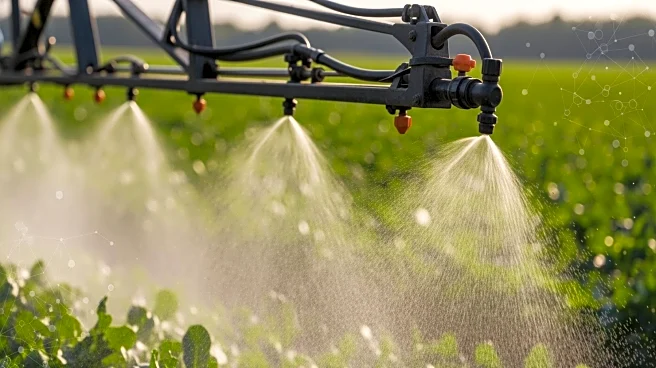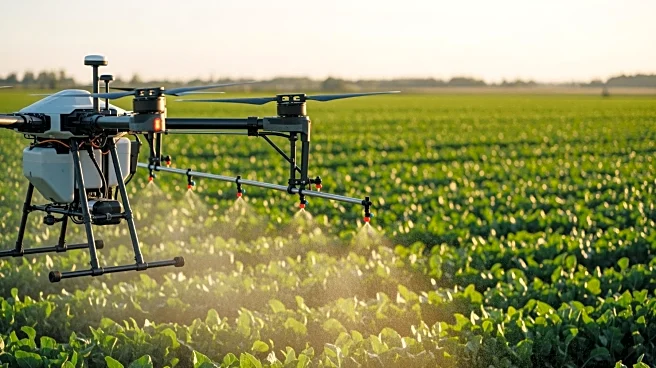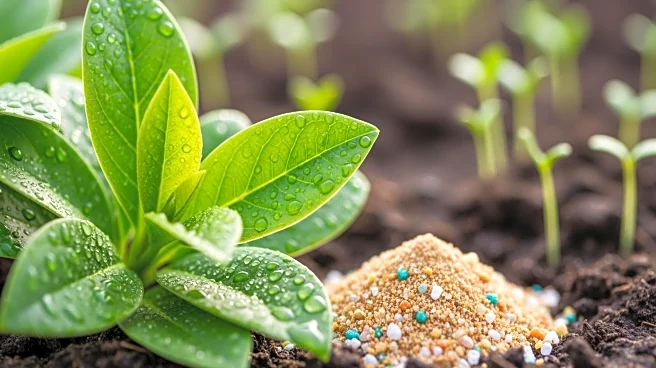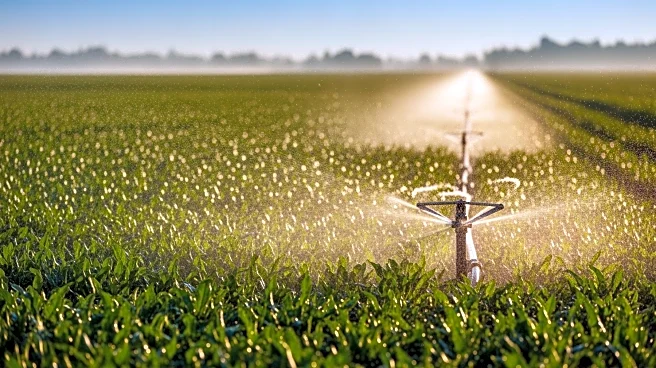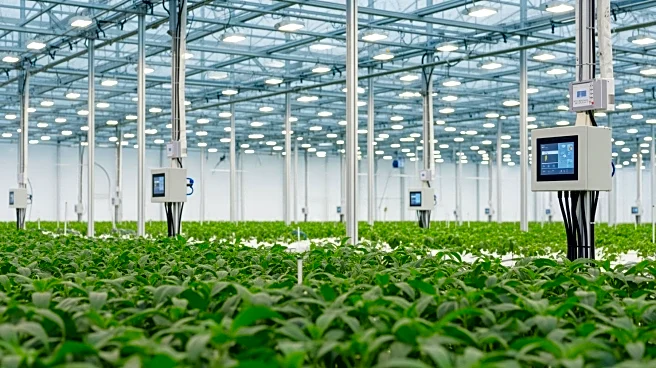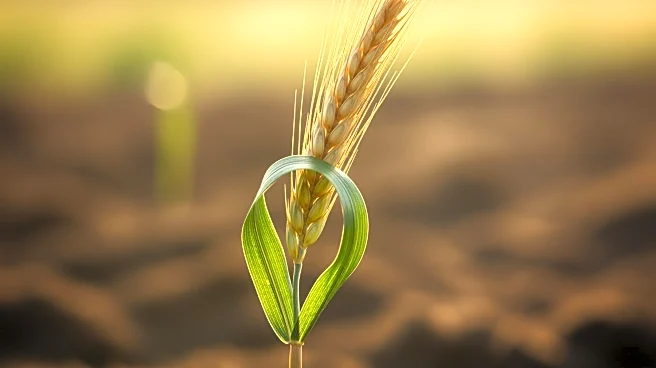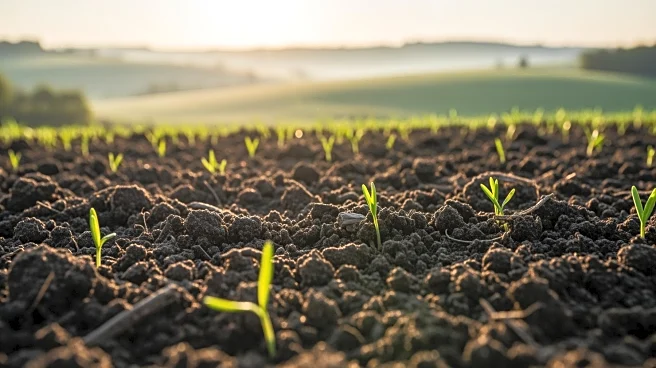What's Happening?
The global agricultural sprayers market is experiencing significant growth, driven by advancements in smart spray technologies and precision agriculture. These sprayers are essential for applying fertilizers,
pesticides, and herbicides efficiently, enhancing crop yields and reducing manual labor. The market is projected to grow at a CAGR of 6.1%, expanding from $2.9 billion in 2024 to $4.4 billion by 2031. Key growth drivers include the adoption of precision farming, labor shortages, and innovations in drone-based and sensor-controlled sprayers. The Asia-Pacific region leads the market due to extensive agricultural land and government investments in farm mechanization.
Why It's Important?
The rise of smart spray technologies in agriculture is crucial for meeting global food security demands and optimizing resource use. As precision agriculture becomes more prevalent, farmers can achieve higher productivity and efficiency, reducing environmental impact through controlled chemical applications. The growth of this market reflects broader trends in agricultural modernization, with implications for food supply chains and sustainability. The adoption of these technologies can help address labor shortages and improve the economic viability of farming operations, particularly in developing regions.
What's Next?
Continued investment in agricultural robotics and smart spraying systems is expected, with government subsidies and public-private partnerships playing a key role. The expansion of precision farming programs and the integration of AI-driven application systems will likely accelerate the adoption of advanced sprayers. Emerging economies present significant growth opportunities as they modernize agricultural practices and infrastructure.
